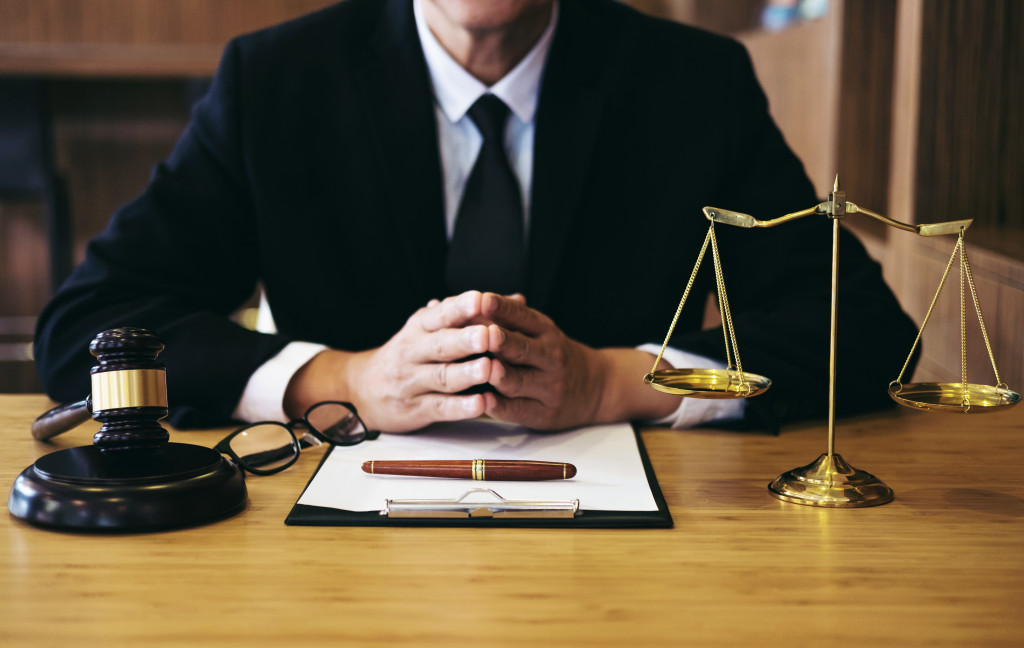- The criminal justice process, spanning from arrest to sentencing, prioritizes respect, safety, and meticulous documentation.
- The arraignment phase involves formal charge reading, understanding charges, and initiating plea negotiations.
- During the trial, the prosecution and defense present evidence to prove or refute guilt, leading to the final verdict.
- The process is intricate and overwhelming, highlighting the importance of experienced legal representation throughout.
The world of law and justice system is esteemed as one of the most intriguing and enigmatic arenas. It can be fascinating to watch Hollywood movies or TV series that depict criminal trials, hearings, and punishments. However, the reality of the criminal justice system is often far from the fiction portrayed on the screen. This blog post will take a deep dive into the criminal justice system and offer you a comprehensive overview of the arrest-to-sentencing process.
Arrest
The Criminal Justice System is a vast and multi-layered mechanism that comprises several elements. Starting with the arrest, when law enforcement officials detain an individual who is suspected of a crime. The typical scenario is that a police officer, armed with a warrant or probable cause, detains the individual and brings them to the station for further questioning. Here are factors to prioritize:
Respect
Respect plays a cornerstone role in the arrest process. It’s crucial that law enforcement officers uphold the dignity and human rights of the individual, regardless of the suspected crime. The officers must adhere to procedural guidelines and laws, including Miranda Rights, that require them to inform the individual about their right to remain silent and have an attorney present.
Documentation
The meticulous documentation of the arrest process is of paramount importance in the criminal justice system. This includes carefully recording the events leading to the arrest, the arrest itself, and any subsequent actions taken. The purpose of this detailed record-keeping is twofold: it helps maintain transparency in the procedure and ensures the suspect’s rights are not infringed upon. These documents can also serve as crucial evidence during the trial, influencing the verdict and sentencing.
Safety
Ensuring safety is an essential aspect of the arrest process in the criminal justice system. Both the officers and the individual under arrest have a right to be safe during this initial phase. Law enforcement officials are trained to use only the minimum necessary force to subdue a suspect if they resist arrest.

Arraignment
Following the arrest, the next stage in the criminal justice system is the arraignment. This is the formal reading of charges to the accused individual in a court of law. During the arraignment, the judge typically informs the accused about their constitutional rights and asks them to enter a plea (guilty, not guilty, or no contest). The accused’s response to the charges leads to the subsequent stages of the trial or plea negotiations. Here are essential things for the defender’s side:
Lawyer Availability
Having a criminal lawyer available at the arraignment can significantly impact the course of the trial. A lawyer’s expertise allows for an in-depth understanding of the charges and more informed decisions regarding the plea. They can guide the accused through the complicated legal landscape, advising on potential defenses and plea bargain opportunities.
Understanding the Charges
Grasping the gravity and nuances of the charges is critical in the arraignment phase. It is here that the accused first learns the exact nature of the charges against them. Understanding these charges, their implications, and the potential penalties can dictate the accused’s plea. Misinterpretation or misunderstanding could lead to detrimental decisions, highlighting the importance of legal representation.
Plea Negotiations
Plea negotiations, often referred to as plea bargains, form a critical component of the arraignment process. This typically involves the accused pleading guilty to a lesser charge, or to one of several charges, in exchange for a more lenient sentence or the dismissal of other charges. The plea negotiation phase, conducted under the purview of the defense lawyer, the prosecutor, and the judge, necessitates a keen understanding of the legal consequences and a strategic approach to the accused’s advantage.

Trial
The trial phase is the cornerstone of the criminal justice system, where the determination of guilt or innocence takes place. This stage is the culmination of all prior steps from the arrest, arraignment, and all the preceding legal proceedings.
During the trial, both the prosecution and defense present evidence, call upon witnesses and make arguments to either prove or refute the guilt of the accused. The trial process is meticulously structured to ensure a fair hearing and balance the scales of justice.
In most cases, it is the judge or jury’s decision, based on the evidence presented, that decides the verdict. The accused either receives a sentence of guilt or innocence, depending on the outcome of the trial. If found guilty, there are usually a variety of sentencing options available to the judge.
The criminal justice system is an intricate and delicate process that requires a skilled and impartial approach. The arrest-to-sentencing process is overwhelming for most individuals, and that is why one needs to have an experienced attorney by their side. This blog gives you an insight into the different stages of the criminal justice system and hopes that it helps you understand the intricacies of the process. If you or someone you know is involved in a criminal case, make sure you have a competent attorney to guide you through this painstaking process.







